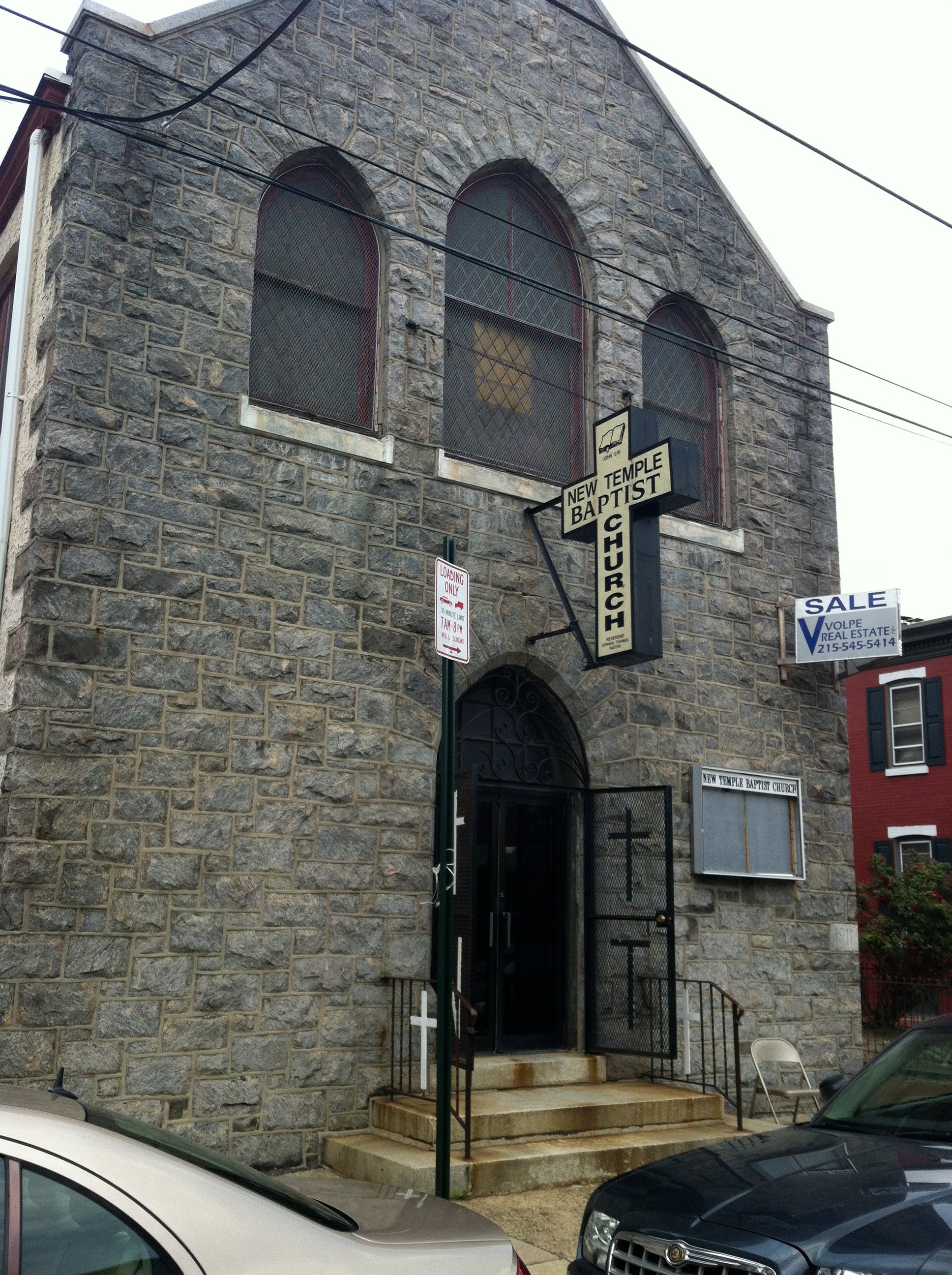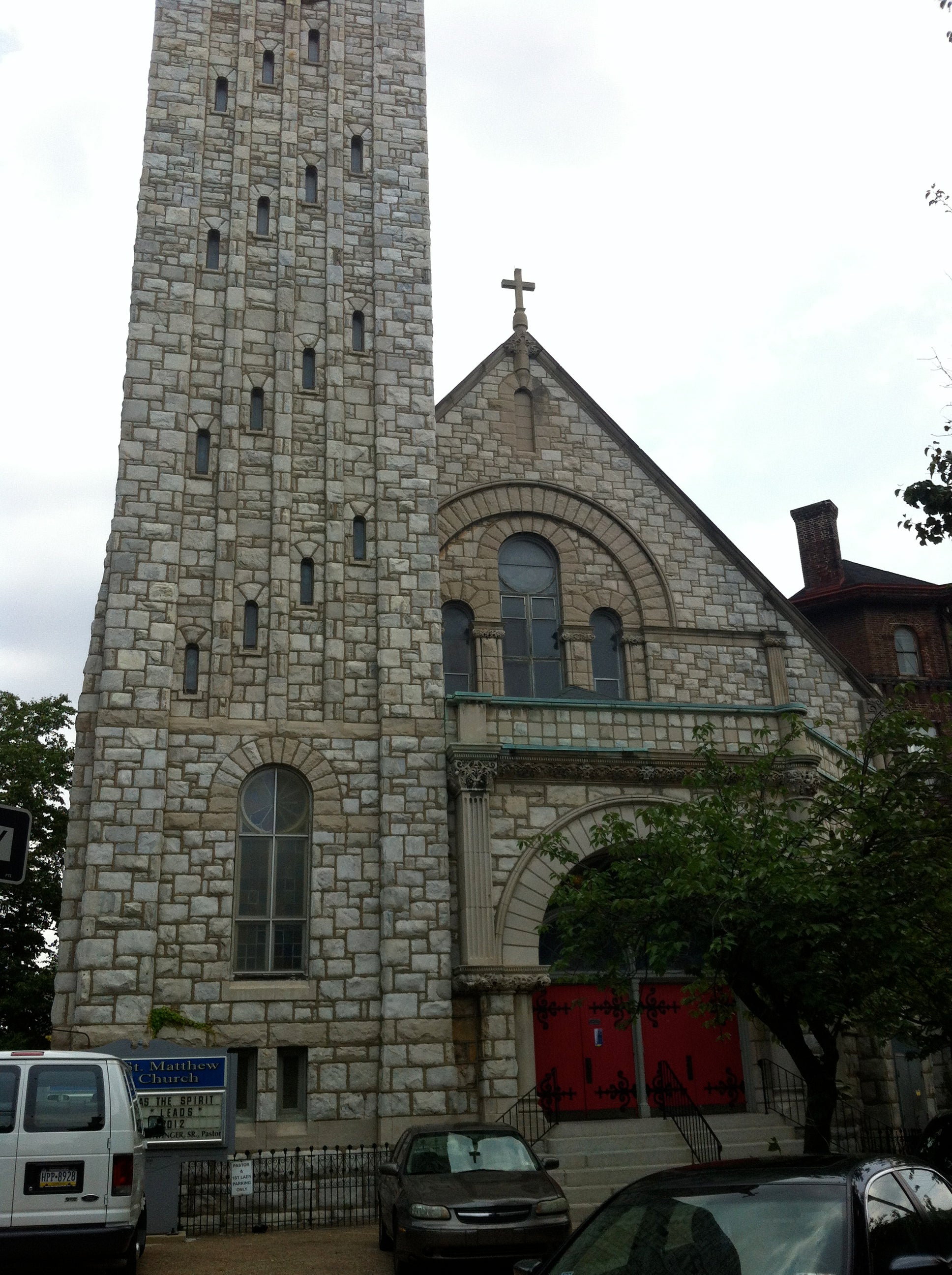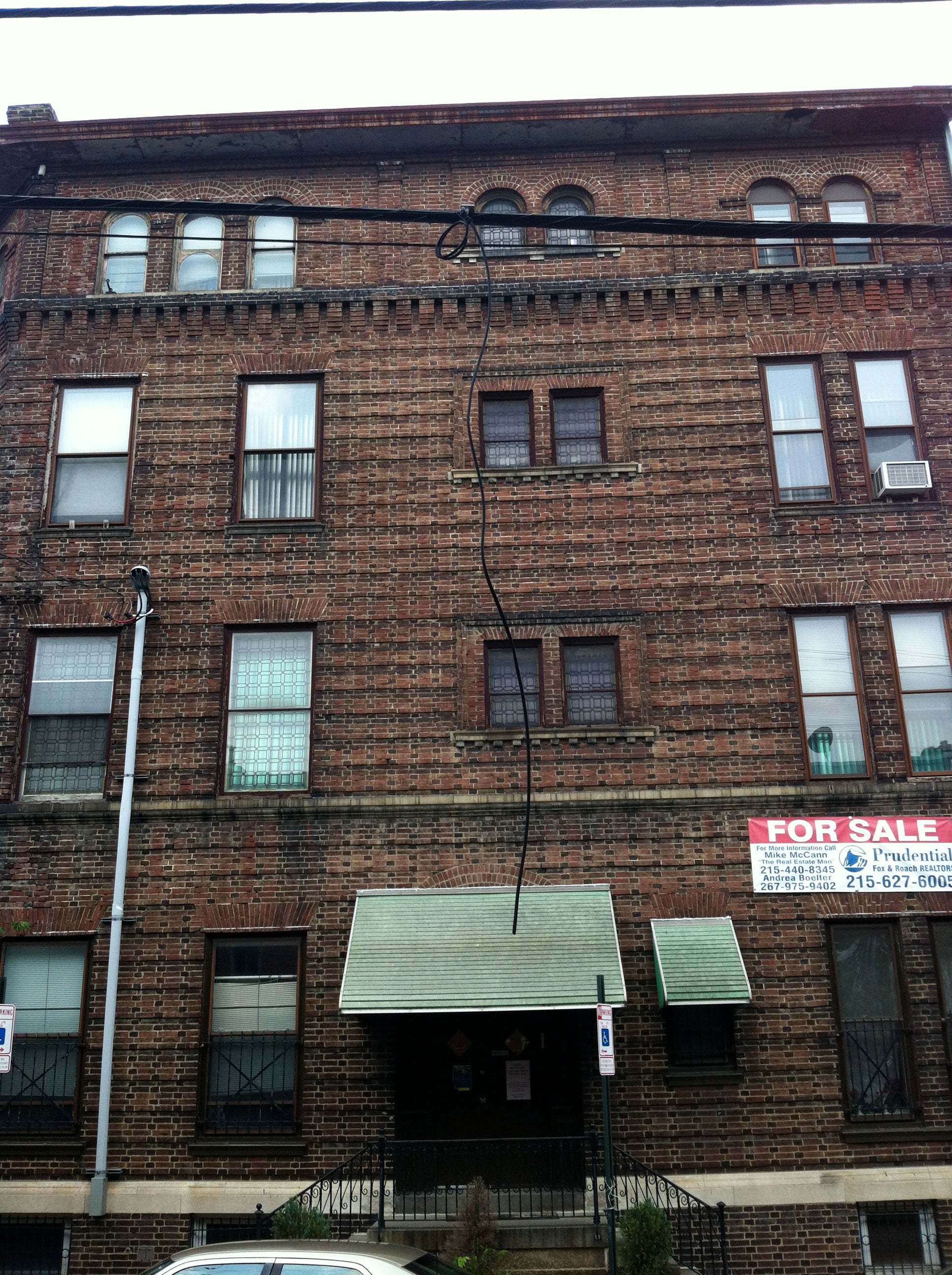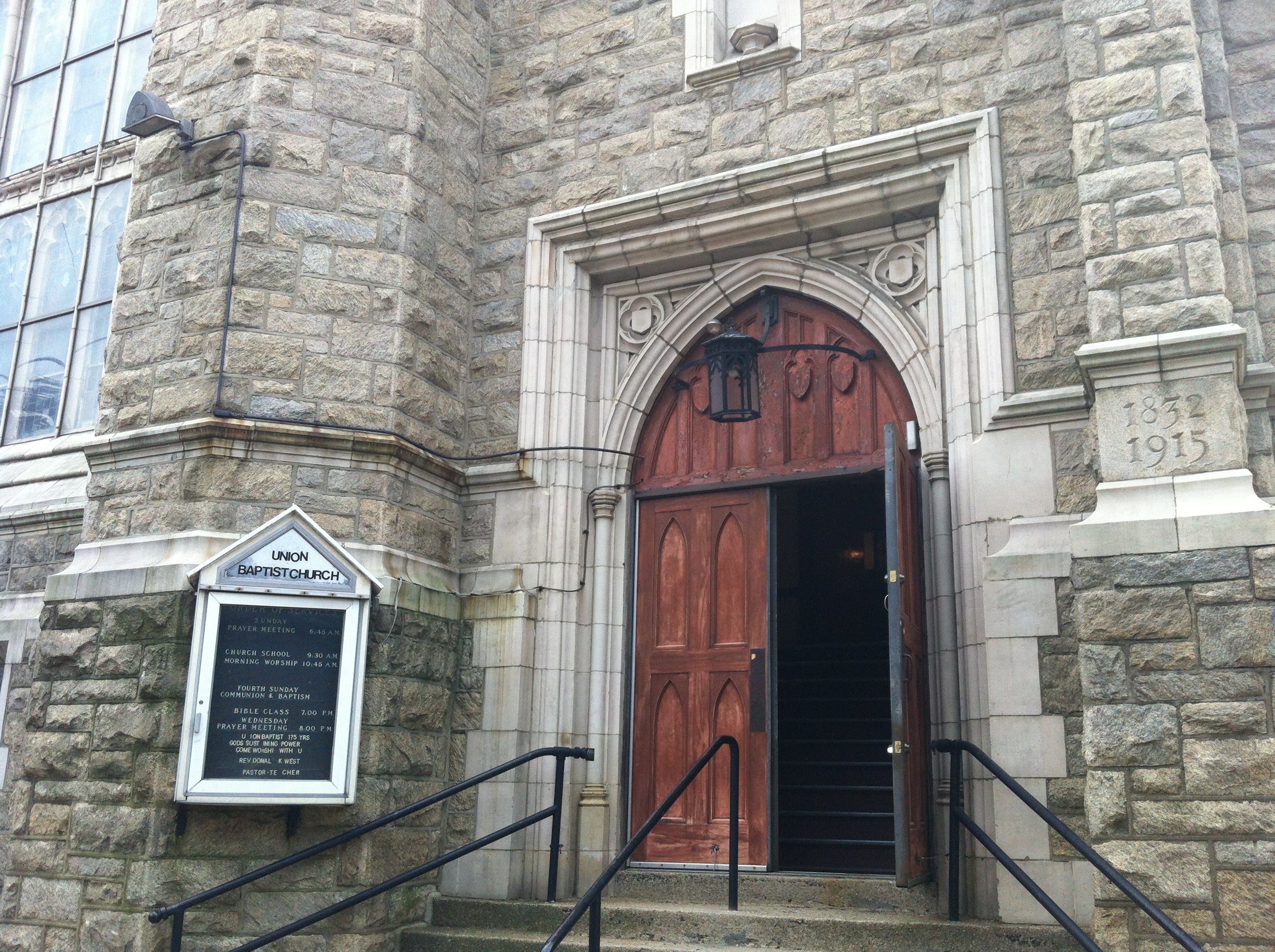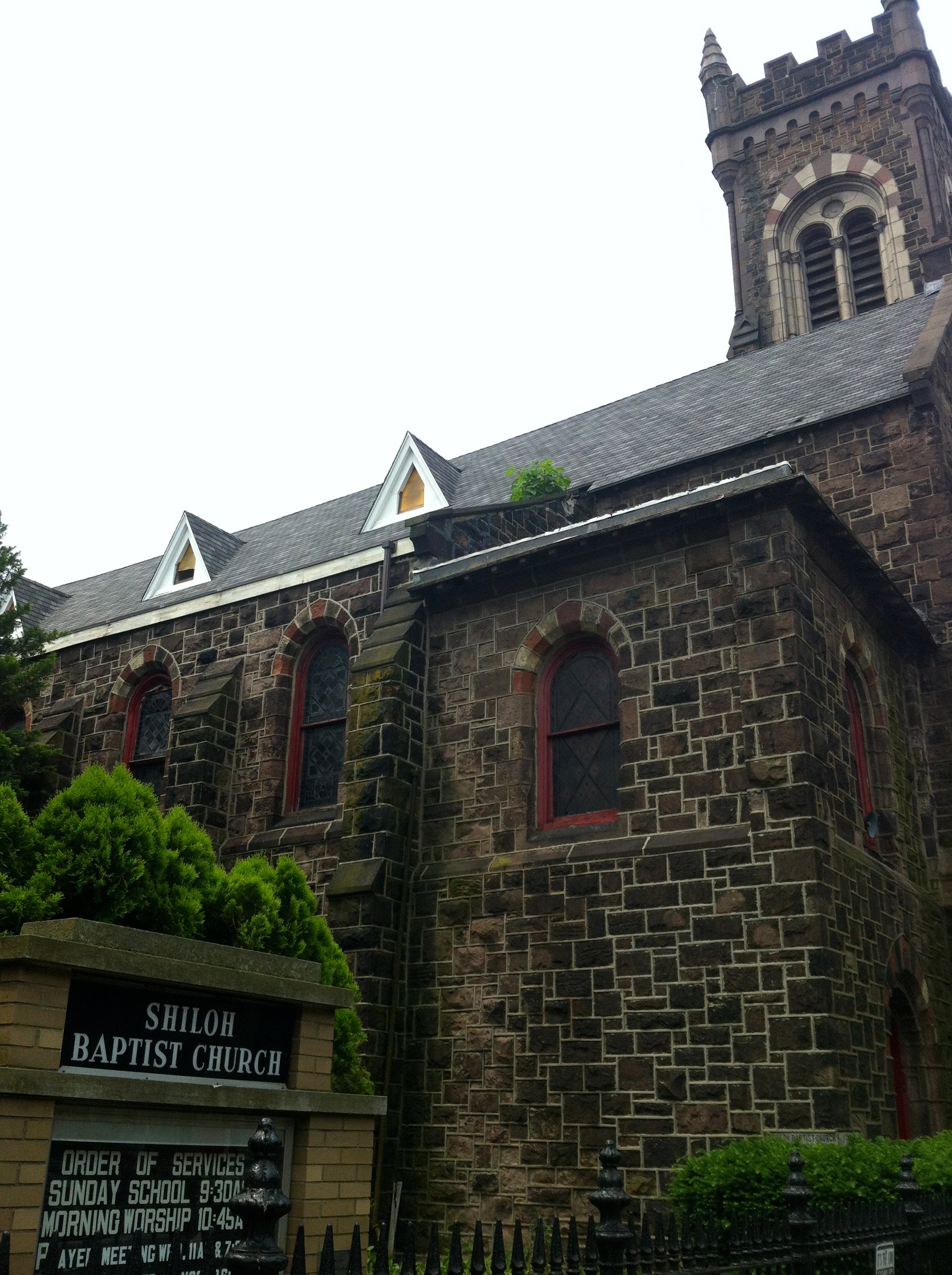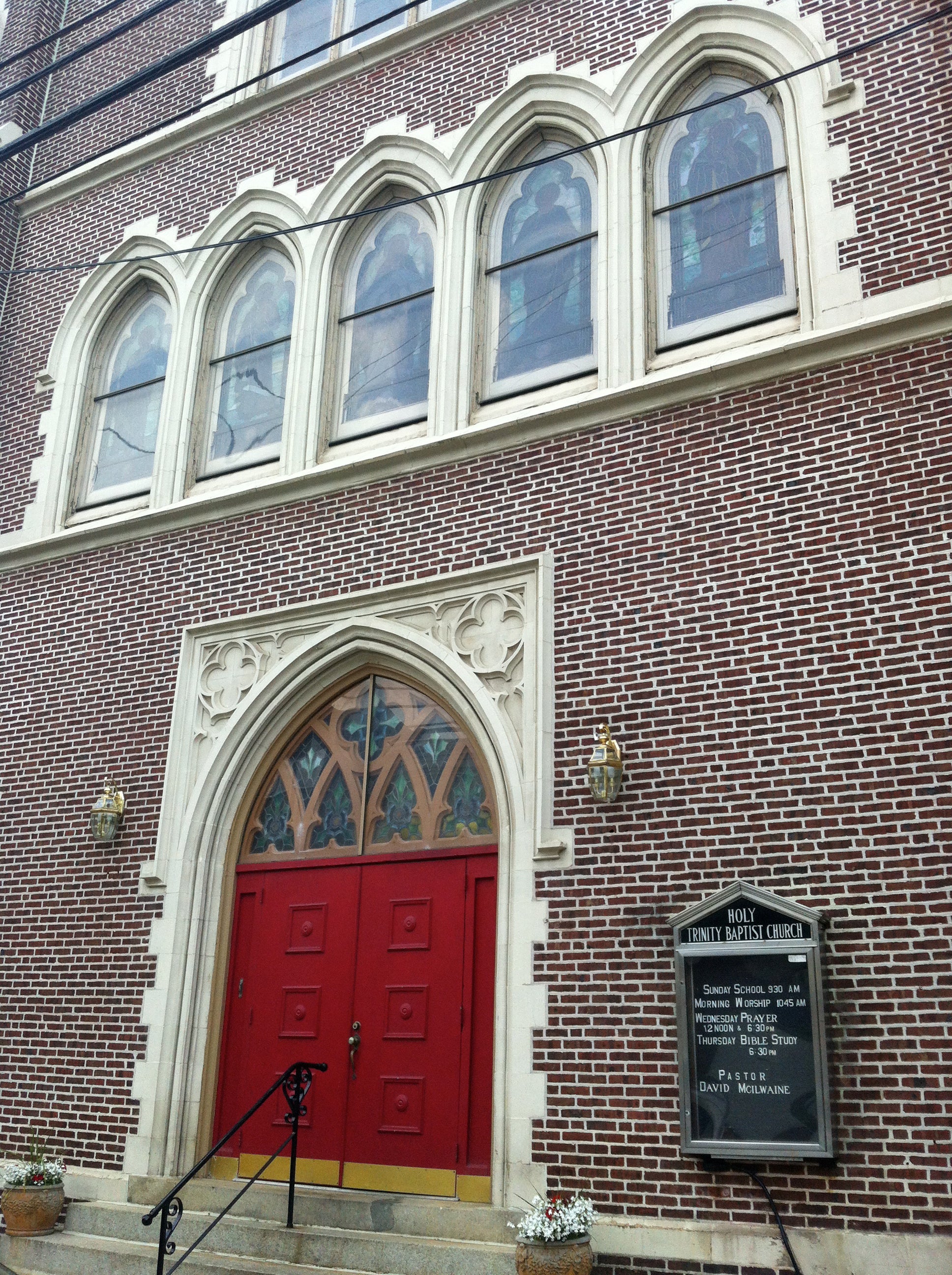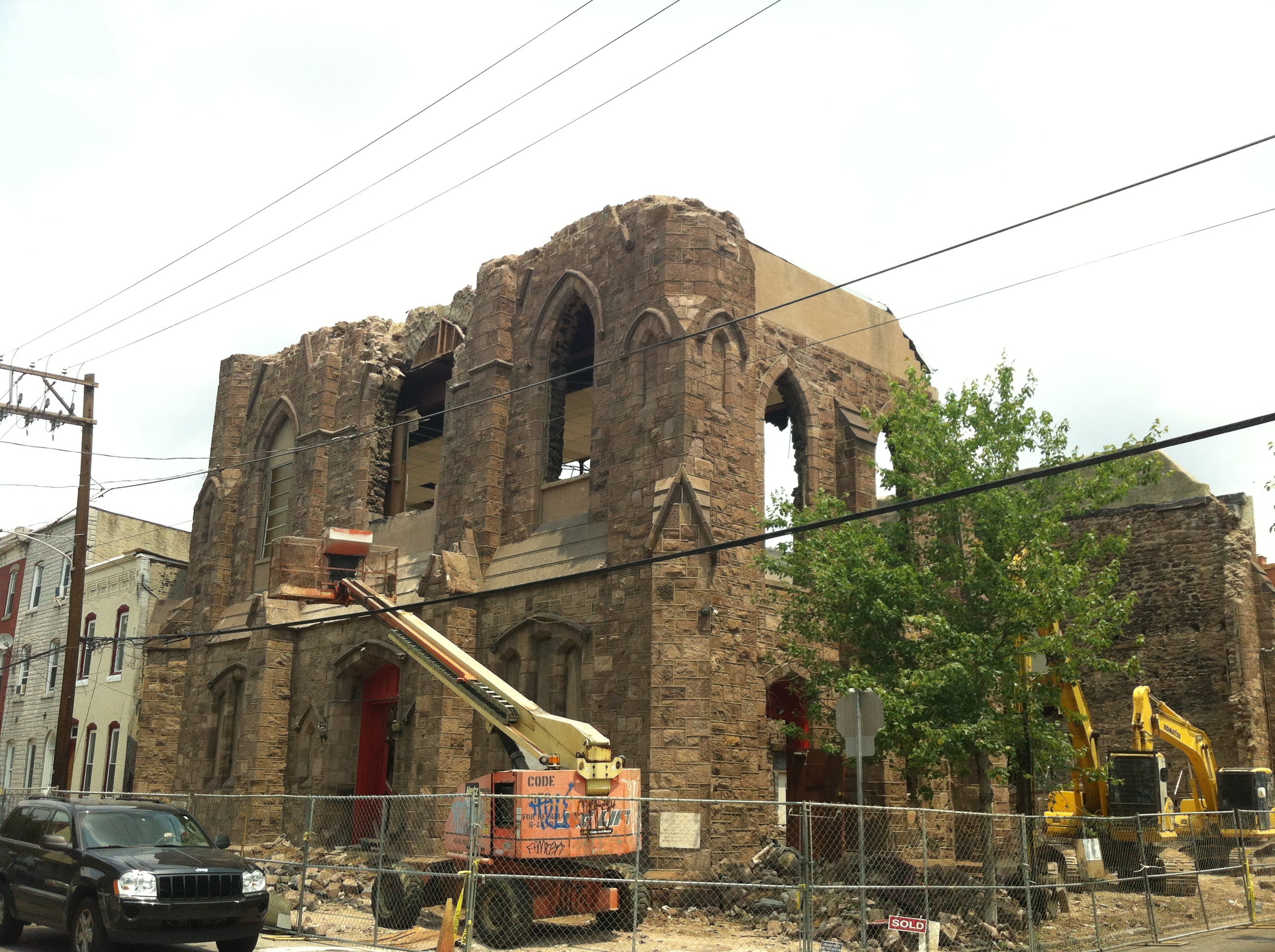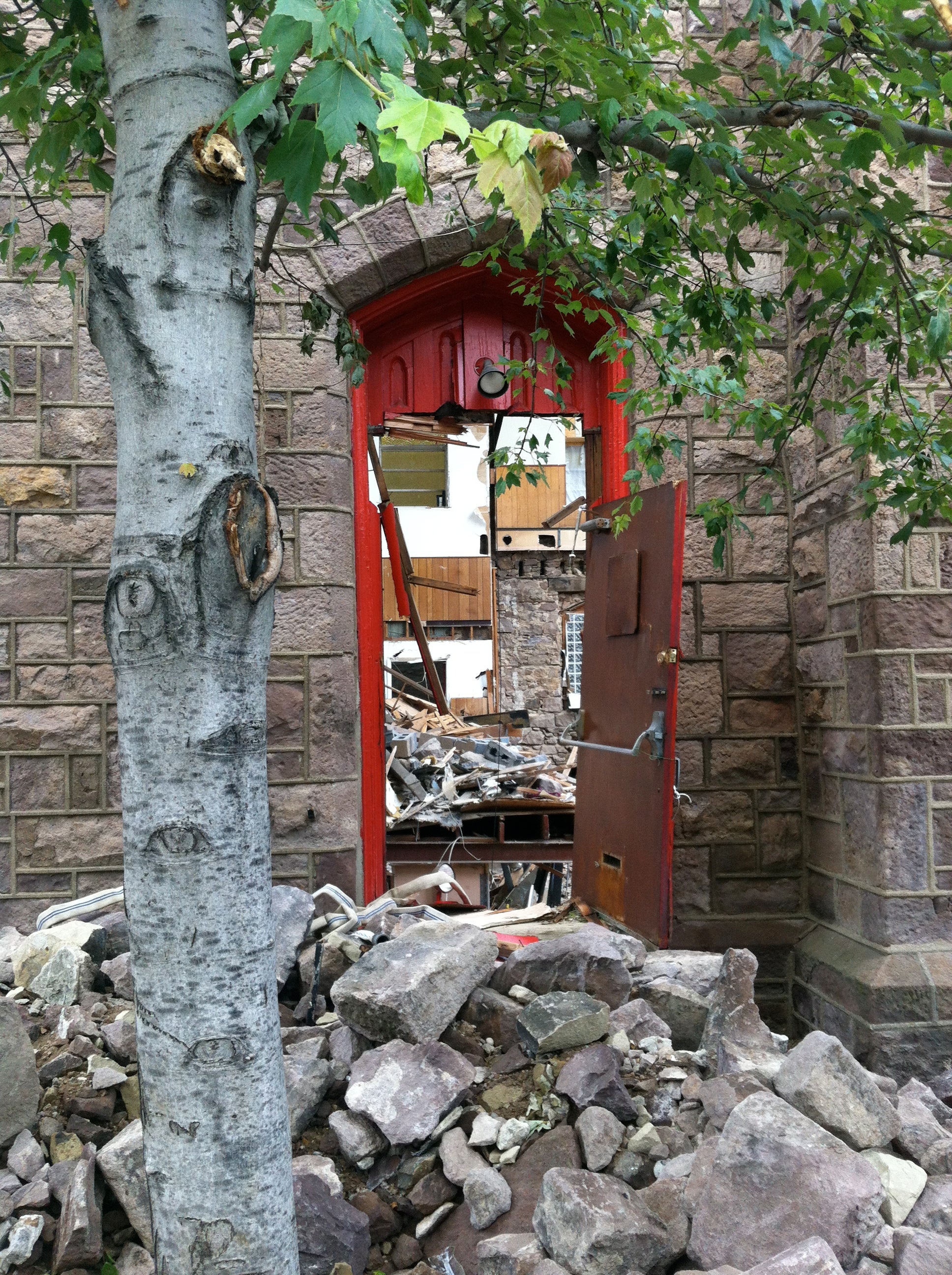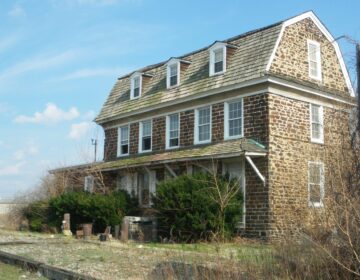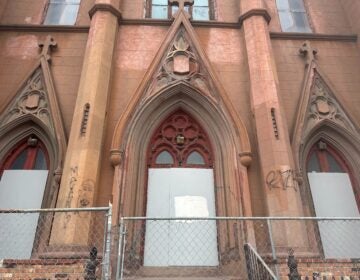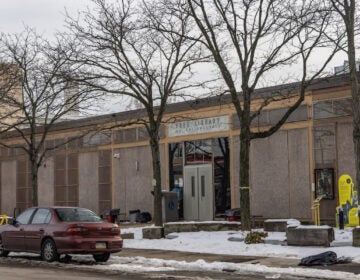In Graduate Hospital neighborhood, a microcosm of churches under siege
If all goes well for developer Benjamin Weinraub, he’ll eventually receive the go-ahead from the Zoning Board of Adjustment (the case was held for continuance until July) to begin converting the historically-registered Greater St. Matthew Baptist Church (originally called St. Anthony of Padua Roman Catholic Church) and its four-story rectory into 38 rental apartments.
Once he starts, he’ll be doing neighbors a favor.
That’s because with a host of purpose-built churches still standing, the Graduate Hospital neighborhood —between South Street and Washington Avenue, from Broad Street to the Schuylkill River — acts as a microcosm when it comes to the fate of Philadelphia’s religious buildings today. The area’s churches have fallen victim in recent years to a spate of sales, and often that’s led to their demolition.
Jonathan Farnham, the executive director of the Philadelphia Historical Commission, has labeled this citywide trend a “crisis,” citing it as the most pressing preservation problem facing us. The most visible case of recent months — that of the Church of the Assumption on Spring Garden Street in the Callowhill neighborbood — was just the tip of the iceberg, preservationists contend.
Currently, about a dozen churches are on the market in a variety of neighborhoods, according to Partners for Sacred Places, a national organization dedicated to finding solutions for troubled churches.
The reasons that a congregation chooses to abandon its home are many, says JoAnn Jones, a member of the standing committee of the Episcopal Diocese of Pennsylvania who also sits on the Historical Commission. “In a lot of neighborhoods, we see these clusters of churches,” she says. “But our denomination, and I suspect others, are experiencing a steep decline in membership. And that means that the churches simply can’t afford to pay the heat and electric bills.” Or repair their windows and roofs.
According to Robert Jaeger, president of Partners for Sacred Spaces, the total inventory of purpose-built sacred spaces in the city comes in at about 1,000, The Preservation Alliance’s “Inventory of Historic Religious Properties” database includes 748 of them and reports that 161 of those properties were sold between 2001 and 2011. In total, the report says, 132 properties are listed on the city’s historic register, an additional ten are not individually listed, but are within historic districts.
At just about every Historical Commission meeting, then, the matter of what to do with a church-for-sale arises. “We’re seeing a lot of interesting questions — and a lot of interesting answers,” says John Gallery, executive director of the Preservation Alliance. “We’ve got to start figuring out what compromises are acceptable. Because so many of these structures have distinguished architecture and have become real landmarks in their neighborhoods, at this point it’s a good thing if they’re being sold for any kind of adaptive reuse.”
Reasons for Selling
Enter Weinraub and his plans for Greater St. Matthew, which sits near 23rd and Fitzwater Streets, and was listed for sale at $2.5 million late last summer. In two meetings before the South of South Neighbors Association, he was pressed on design issues. But the fact that he was not proposing to demolish the church, which was built in 1889 and features a distinctive tower, stood him in relatively good stead.
At the second community meeting in April, one neighbor mourned the loss of yet another community space, but Weinraub — like other developers — says the economics never work out and banks are “very resistant to anything but housing.”
John Roedig of Keller Williams Realty adds that “zoning is a huge limitation — churches are zoned for residential use in residential communities so other uses are probably not a good fit.”
Roedig is currently listing about a dozen churches in the region and experience tells him that, ironically, other religious organizations can also emerge as buyers. “It’s not always true that congregations are shrinking,” he says. “Sometimes a religious institution finds that its current facility is far too small and their church building becomes an asset that they can leverage as they hunt for a larger one to move into.”
Other factors, too, can figure into a move. In the case of Greater St. Matthew, parking became an issue as the congregation and neighbors battled for spots. Its congregation subsequently relocated to Tioga-Nicetown — into a space vacated by another church. (Meanwhile, Weinraub also faces neighborhood opposition because his condo conversion does not provide for parking.)
Not far from Greater St. Matthew — on 23rd, just south of Catharine St. — a FOR SALE sign also hangs from the New Temple Baptist Church, a small stone structure built in 1911. Its congregation is seeking new digs to accommodate aging parishioners who balk at climbing a grand staircase to the second floor sanctuary, according to realtor Vincent Volpe.
And, yes, parking is an issue, since the church runs along Madison Square, one of several blocks in the area whose streets have been bricked into offer garden-style rowhomes.
Developers Swoop
Still, during the six months it was listed at $450,000, Volpe says, “there must’ve been about 20 people walk through, all with different ideas.” Churches weren’t interested because of the high costs involved in updating the building, but residential developers swooped, with intentions of demolishing the building and erecting two homes on the small site. They quickly lost momentum, however, upon learning that it’s historically certified, according to Volpe.
Subsequently, individual buyers — with architects in tow — have looked at turning the 2,500-square-foot building into a single family home, as was done similarly to a church at the 800 block of Lombard Street. They too balked at the repairs involved. Then the pastor requested that the church be removed from realtors’ listings after an anticipated relocation fell through. “To tell you the truth, I was kind of happy when he told me to hold up on listing the property,” Volpe says. “It’s sad how these churches are disappearing. I guess, it’s just part of the increased gentrifying of the neighborhood.”
Whether or not such residential conversions represent the highest and best use, that churches are in any way salvaged is noteworthy in a neighborhood where they’re being demolished, one after another. The first to come down in recent years was the Varick Memorial AME Zion Church (built in1889 as the Fourth Reform Unitarian Church) at 19th and Catharine. Its site sat empty for nearly three years until new construction began in 2011 on ten townhomes called Catharine Court.
In 2010, Metropolitan AME at 20th and Fitzwater was demolished; on the site now sit six townhomes, developed by C&R Building.
And, as this goes to press, the other corner of the block is in a state of tumbling brick and heartbreaking ruin as Mt. Olive AME is torn down, finishing a course of disrepair that began in the 1950s. It too will be transformed into a residential development by C&R Building.
Still, all has not been lost in the neighborhood.
Some Successes
Take Holy Trinity Baptist, which has resided in the same tidy mid-block brick building, at 1818 Bainbridge St., for 120 years, according to Lois Bundy, the church secretary. “We’re doing just fine — and we’re staying,” she says. With 250 parishioners, a new pastor, and an intact building, Holy Trinity is lucky.
While Bundy, who’s been attending services there for 70 years — she’s 73 years old — still lives in the neighborhood, many others come from far and wide. But the church has its own parking lot across the street (which is adjacent to still another church, St. Mary’s Episcopal). “That’s a big help for us,” Bundy says. “I think it’s horrible — a disgrace — that so many other churches feel they have to leave.”
A few blocks away, Shiloh Baptist Church, on the corner of 21st and Christian streets, has also managed to make do. Blessed with Frank Furness provenance, it was tagged by Partners for Sacred Places as a prime candidate for a pilot program, Arts in Sacred Places, which attempts to — through carefully negotiated lease terms — partner arts organizations in need of space with religious buildings looking to increase their stakeholders.
“A number of churches have learned to be really creative about how to raise money, how to use their space, how tell their story,” says Jaeger. “It’s both their genius and plague that these buildings have lots of separate spaces, and some of them are really big. Yes, maybe the offices or the school rooms can be easily used — but the real challenges can be these magnificent sanctuaries that are full of artistry. They can be tough.
“A buyer says there’s 35 spaces, and he can figure out what to do with most of them,” continues Jaeger. “But the last three or four… there’s the towers, the stained glass, the soaring central space. . . .” Enter the request for demolition, the deaccessioning of the glass or pews, or, at best, the conversion into condos.
Off the top of his head, Jaeger comes up with just one site, the Swedenborgian Society’s historic building at 22nd and Chestnut, which was turned into something other than residences. In 1991, it was converted to office space. A series of tenants have “protected the chancellery and the altar, and re-used it all rather dramatically,” he says. “”They’ve kept the iconography, but go about their business as if the building never housed a church.”
Staying Intact
Of critical concern, then, Gallery observes, is to “start a conversation, before buildings are closed, about assets like stained glass windows, pews, statues, before they start stripping them of stuff. The ideal is to have a reasonably intact structure that goes to market, and if necessary the removal of materials doesn’t happen until something can be worked out between the buyer and seller.”
Just such a discussion recently arose before the Historical Commission with a request by the Episcopal Diocese to allow it to remove 40 stained glass windows from St. Peter’s Church (1873) in Germantown, a historically registered building designed by Furness & Hewitt. The Commission had previously allowed the church to deaccession several other pieces by Tiffany Studios and Violet Oakley (they were sold to the Pennsylvania Academy of the Fine Arts), but insisted that the bulk stay in situ.
This time around, the Church said it had found a buyer — after marketing the property for seven years — who had made it a contingency of sale that all religious traces be removed from the building. The Commission approved the removal of the glass upon closing of the sale. Chair Sam Sherman noted that the Commission should think about formulating a policy to deal with such future developments.
Ironically, the planned project never materialized. “It was a rare property that met our needs,” says Brenda Riley, administrative director of the Waldorf School, the intended buyer. “It allowed for outdoor play space, it was near Fairmount Park but in the city, it offered a great campus environment for an enrollment that’s grown by 25 percent or so in the last five or six years.” Although the school has looked at other school buildings, Riley says they don’t offer the charm of a great church. “Plus, we really looked forward to moving into a location that means a lot to the neighborhood.” Riley won’t say why, but the move eventually didn’t work out.
No End in Sight
And so the cases continue, as with the recently proposed demolition of two certified 19th-century rectory buildings in West Philadelphia. The Episcopal Diocese’s “public interest” argument contended that razing them would make way for an income-generating tower which would help raise funds to repair the tower of the adjacent Philadelphia Episcopal Cathedral. That case was tabled by the Historical Commission pending more information.
It’s only a matter of time before the still-for-sale (asking price: $2 million), 7,000-square-foot St. Andrew’s Ukranian Catholic Church in Society Hill finds a buyer. “This building is being looked at as a development opportunity for townhomes or condos,” says Noah Ostroff, the Coldwell Banker listing agent. “Due to the fact that it is historic, it’s been a challenge getting the right buyer.” (The property is part of its historic district, Society Hill, but not individually designated.)
Ostroff has even set up a web site specifically dedicated to marketing the property. “Build one magnificent home or four single family homes using the existing front of the church and new construction on the sides and at the rear of the property,” it reads, in part.
In North Philly, the empty St. Bonaventure looms large on the horizon, offers Gallery. “I believe there’s a small group that uses a portion of it occasionally, but its basically this enormous ghost,” he says. “Its demolition would be an extraordinary thing, but it’s also extremely difficult to figure out what to do with it. It’s an example of this dilemma that we already know about — we should be trying to figure it out right now.”
Which brings us back to Benjamin Weinraub. “This is a beautiful space and we want to preserve as much of it as possible,” he says. He lives and works in the neighborhood, he adds, and his firm, Vintage Redevelopment, specializes in adaptive reuse. As soon as the For Sale sign went up on Greater St. Matthew, he wanted to save it. “This is what we do.”
Contact the reporter at jgreco@planphilly.com and follow her on Twitter @joanngreco
WHYY is your source for fact-based, in-depth journalism and information. As a nonprofit organization, we rely on financial support from readers like you. Please give today.



